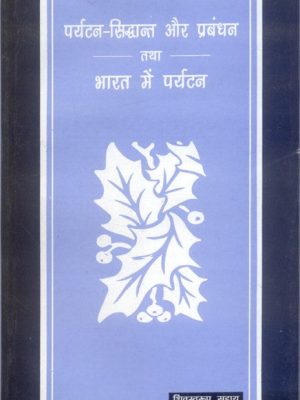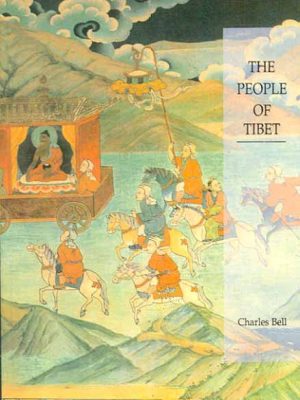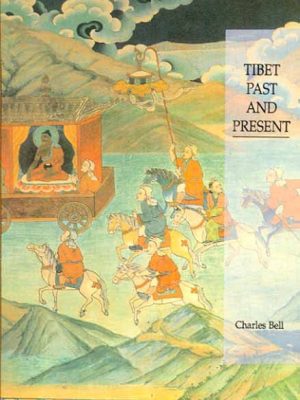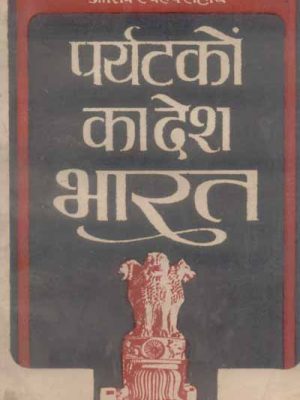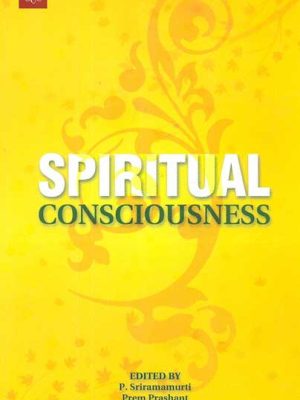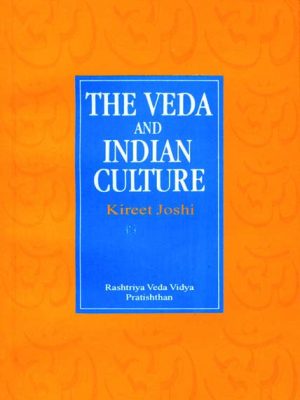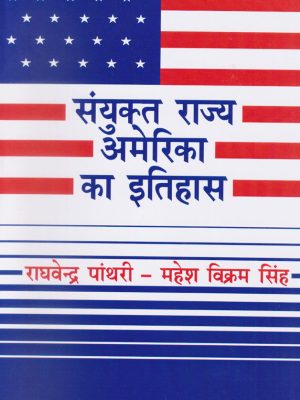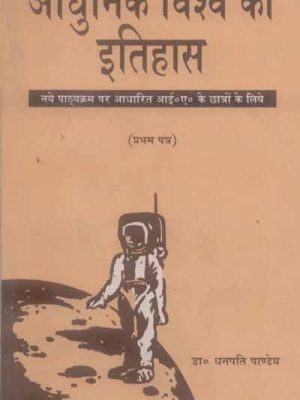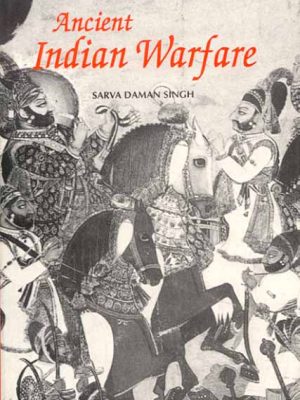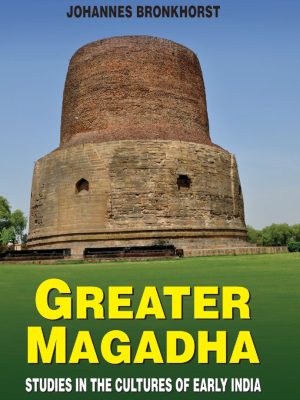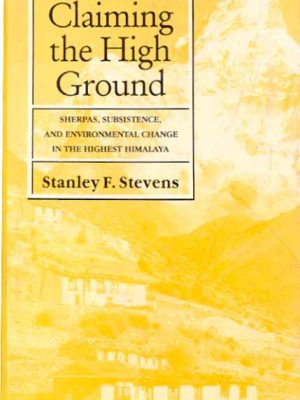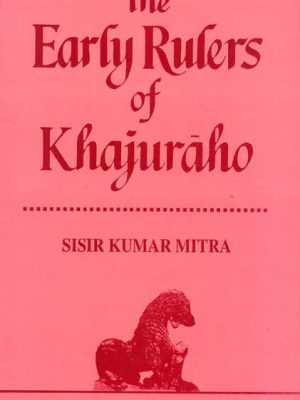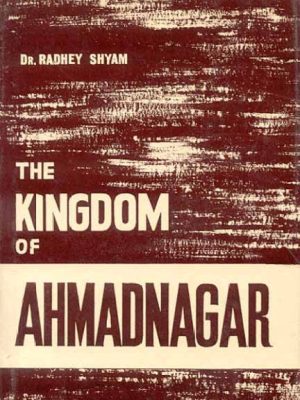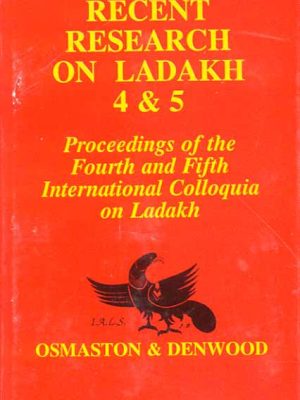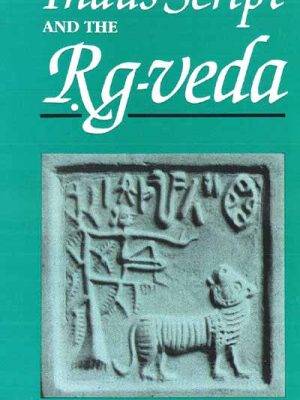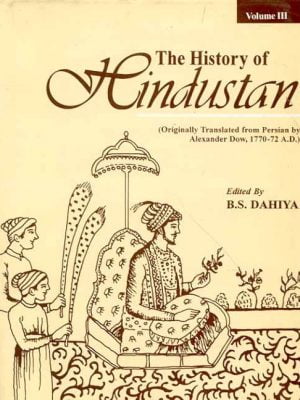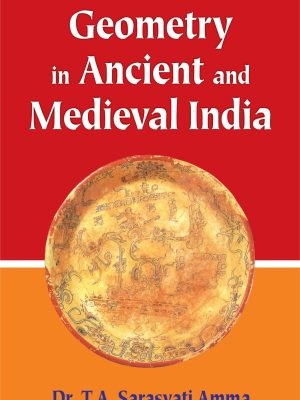Motilal Banarsidass
-
Paryatan-Siddhaant Aur Prabandhan Tatha Bharat Mein Paryatan
Paryatan-Siddhaant Aur Prabandhan Tatha Bharat Mein Paryatan is authored by Shivaswaroop Sahay. The book discusses about the tourism in India and various initiatives taken by the government of India from the time of independence to boost tourism. And various policies framed to attract international tourists and to make India a credible tourist destination.
₹160.00 -
The People of Tibet
The present book is an attempt to speak about the life of the Tibetan people in their own homes. The contents are leaved on the author’s first-hand knowledge of Tibetan life during a residence of nearly twenty years from conversation with his Tibetan acquaintances in their own language not through interpreters. In order to keep this volume within moderate limits he had to exclude from it many aspects of Tibetan life.
₹495.00The People of Tibet
₹495.00 -
Tibet Past and Present
The book deals with Tibetan history from earliest times, but especially with the aims and movements of the period witnessed by the author. Anecdotes, conversations with leading Tibetans, and quotations from poetry and proverbs illustrate the Tibetan point of view.
₹700.00Tibet Past and Present
₹700.00 -
Paryatakon ka Desh Bharat
Paryatakon ka Desh Bharat
Paryatakon ka Desh Bharat is authored by Shiva Swarup Sahay. The book discusses the beauty of India and its uniqueness, its rich culture and the heritage that attracts tourists from all over the world. India is the most diverse country in the world, Be it be people, cuisine, landscapes, language, culture, lifestyle everything changes for every 30km you travel in India and this uniqueness of the nation attracts tourists.
₹495.00Paryatakon ka Desh Bharat
₹495.00 -
Spiritual Consciousness
Spiritual Consciousness
This book brings together research papers, essays, narratives and perspectives, both Indian and global, on the religion of Saints or Sant Mat, particularly the Radhasoami Faith.
₹350.00Spiritual Consciousness
₹350.00 -
The Veda and Indian Culture: An Introductory Essay
The veda and Indian culture
The author has presented the quintessence of the Vedic message in a few brief chapters, and the language is deliberately non-technical. There is a growing thirst among young people who want to be introduced to the secret of the Veda and to understand how various developments of Indian culture are rooted in the Veda.
₹275.00 -
Sanyukt Rajya America ka Itihas: (Upniveshik Kala Se Sheet Yuddh Tak)
Sanyukt Rajya America ka Itihas is authored by raghavendra panthari
₹895.00 -
Aadhunik Bharat ka Aarthik Itihas
Aadhunik Bharat ka Aarthik Itihas
Prof. Sabyasachi Bhattacharya is a well-known historian of the country, whose main area of study has been colonial India. His book The Financial Basis of the British Raj is one of the most talked about and acclaimed books! Prof. Bhattacharya has presented the outline of the economic development of colonial India in the Economic History of Modern India. Prof. Bhattacharya has raised several fundamental questions while assessing the various ET:Ashreekh ideologies within the boundaries of this century and has dealt with those questions in detail in subsequent chapters! He has looked at the question of how India’s economic colonization took place from different angles and in this context has put forward the good or bad consequences of the various policies of the British Government, as well as the policies as a whole and the character of the imperialist nation. Tried to understand it simply. It is noteworthy that Prof. Bhattacharya has specially outlined the character of colonial exploitation and electrified economic development. Rameshchandra Dutt and Rajnipam Dutt’s books on the economic development of modern India were published much earlier, but the present book differs from their books in the sense that it makes full use of the latest research done on this subject and material available from the archives. ! This material was not available at the time of writing of the above mentioned books!
₹145.00 -
Aadhunik Vishwa ka Itihaas
Aadhunik Vishwa ka Itihaas
This Aadhunik Vishwa ka Itihaas is useful to any student of world history. All topics of the Modern World History are clearly explained to the reader with the use of underlined words, keywords and headings in the book. The book also contains clear references that can be very useful to the reader. The book contains all the relevant events of modern history like International Relations, fascism and communism, international conflicts, de-colonization and other global problems.
₹495.00Aadhunik Vishwa ka Itihaas
₹495.00 -
Ancient Indian Warfare
Ancient Indian warfare
The author explores the domestication of horses and elephants and their use for military purposes; the invention of wheeled vehicles and the battle-chariot; the use of metals for the manufacture of weapons; the nature of ancient arms and armour; forts and fortifications; military order and organisation; and the uneasy birth of a moral consciousness evidenced in the development of a code of war.
₹595.00Ancient Indian Warfare
₹595.00 -
Greater Magadha: Studies in the Cultures of Early India
Greater Magadha
The book argues for the importance and independence of Greater Magadha as a cultural area until a date close to the beginning of the Common Era. In order to correct the incorrect notions, two types of questions are dealt with: questions pertaining to cultural and religious dependencies, and questions relating to chronology. As a result a modified picture arises that also has a bearing on the further development of Indian culture.
₹795.00 -
Claiming the High Ground: Sherpas, Subsistence and Environmental Change in the Highest
The Sherpas
The Sherpas of the Mount Everest region, famous for their mountaineering exploits, have frequently been depicted as victims of the world’s highest-altitude tourist boom. Stanley Stevens is the first to analyze the complex interaction of local environmental knowledge, cultural beliefs, and socio-economic and political conditions in changing sherpas subsistence strategies, land use practices, and local resources management institutions.
₹595.00 -
The Early Rulers of Khajuraho
The Early Rulers of Khajuraho
The book(The Early Rulers of Khajuraho) deals, in a comprehensive manner, with the history of the early rulers of Khajuraho, in fourteen chapters. Chs. I-II deal with the origin of the Candellas and define their territory. Ch. III traces their history from Nannuka to Harsa. Chs. IV-VII recount the rise of their power under Yasovarman and Dhanga, their struggles with the Muslims under Ganda and Vidyadhara and their conflicts with Cedis under Vijayapala, Devavarman and Kirtivarman. Ch. VIII is devoted to the rulers from Sallaksanavarman to Madanavarman. Ch.IX describes Cahamana-Candella rivalry and the fall of Mahoba. Ch.X deals with the temporary restoration of Candella power under Trailokyavarman. Chs. XI-XIV give a vivid picture of political, social economic, religious and cultural life of Bundelkhand and offer a survey of its magnificent temples and sculptors.
₹595.00The Early Rulers of Khajuraho
₹595.00 -
Kingdom of Ahmadnagar
Nizam Shahi Kingdom of Ahmadnagar
This work, based on Persian and non-Persian sources, contemporary and later, is an impartial study of the rise and fall of the Nizam Shahi Kingdom of Ahmadnagar, founded in 1490 A.D., conquered by Shahjahan and annexed to the Mughal empire in 1636 A.D. From the very beginning, Nizam Shahis, struggled against the neighbouring states of the North, the Daccan and the South, the rising power of the Portuguese and then against the expansionist designs of the Mughal Emperors, to preserve the local cultural traditions, political independence and also to maintain balance of power between the imperial power of the North and independent states of the Daccan. In their struggle against the Mughals, they were supported by the Portuguese, and the states of Bijapur and Golkunda, by the Marathas and Abyssinians.
₹895.00Kingdom of Ahmadnagar
₹895.00 -
Recent Research on Ladakh 4 and 5: Procedings of the Fourth and Fifth International Colloquia on Ladakh
It is known for tradition, values and cultures. The living Buddhist culture that you find in Ladakh is extraction from Tibet but itself is orginated in India
₹695.00 -
Recent Research on Ladakh 6: Proceedings of the sixth International Colloquium on Ladakh Leh 1993
Ladkh
ladakh is known for tradition, values and cultures. The living Buddhist culture that you find in Ladakh is extraction from Tibet but itself is orginated in India
₹300.00 -
The Indus Script and the Rg-veda
The Indus Script and the Rg-veda
Since the publication of the concordances of the inscriptions of the Indus seals many people have been working on the solution of the riddle presented by the 5000 years old indus script of the Indus valley. At first sight the task does not appear too difficult, as there are pictograms that can easily be recognized as man, bird, fish, dog or plant or a part of them. A lot of signs are geometric, but this does seem to be an insurmountable obstacle either, since some of them resemble or are identical to the majuscules of the Greek and the Latin alphabet or found in the mudras of Indian dance and in the patterns of symbolic Indian art. The decipherments that were based on these similarities resulted, however, only in the reading of some inscriptions as more or less obscure names, sometimes not even a phonetic value could be given. Nevertheless they are often presented as complete decipherments to the public. On this account, the pretension that the Indus script is deciphered meets with increasing suspicion and is exposed to ridicule even. Many scholars working in this field are nowadays of the opinion that the Indus script is altogether indecipherablem if not a bilingual of considerable size turns up.
The approach to a decipherment presented in this volume make avail of bilingual, too, but its masterkey is the discovering of the symbolic and linguistic connection of the Indus signs with the Rg-Veda. More than 200 inscriptions, among them the longest and those with the most interesting motifs, have been decoded here by setting them word after wordin relation to Rg-Vedic verses. The results that were gained by this method of comparison for the pictographic and phonetic values of the Indus signs are surprising and far beyond the most daring phantasy. They have been summarised now in a complete sign-dictionary containing over 150 further inscriptions. At the same time many problems of the Rg-Veda could be solved and new insights be won, for example in the issue of the age of the Rg-Veda and the origin of the Vedic poets or the nature of the Soma plant.
₹650.00The Indus Script and the Rg-veda
₹650.00 -
The History of Hindustan (3 Vols.)
The History of Hindustan (3 Vols.)
The book is meticulously edited by Dahiya whorendered the original Anglo-Nordic script in modern english without disturbing the original diction and structure and has relied upon the works of Charles Jonston’s the system of Vedanra and on Lawrence Dawson in The Nuttall Encyclopaedia for transliteration and standerdization of spelling of proper names. This book is a must for all Research Centers, Institutes, Universities and Libraries and gives a contemporary account of the Muslim period in India.
₹2,995.00The History of Hindustan (3 Vols.)
₹2,995.00 -
Roles and Rituals for Hindu Women
Roles and Rituals for Hindu Women
This book aims to fill a notable gap in the literature. Twelve contributors study the role of women in Hindu religion by examining textual studies of the part played by women in a variety of religion rituals, both past and present, by exploring the socio-religious context of their various communites; and by using specialist material to draw on cross-cultural conclusions.
₹595.00 -
Geometry in Ancient and Medieval India
Geometry in Ancient and Medieval India
It deals in detail with the Sulbasutras in the Vedic literature, with the mathematical parts of Jaina Canonical works and of the Hindu Siddhantas and with the contributions to geometry made by the astronomer mathematicians Aryabhata I II, Sripati, Bhaskara I II, Sangamagrama Madhava, Paramesvara, Nilakantha, his disciples and a host of others. The works of the mathematicians Mahavira, Sridhara and Narayana Pandita and the Bakshali Manuscript have also been studied. The work seeks to explode the theory that the Indian mathematical genius was predominantly algebraic and computational and that it eschewed proofs and rationales.
₹695.00
